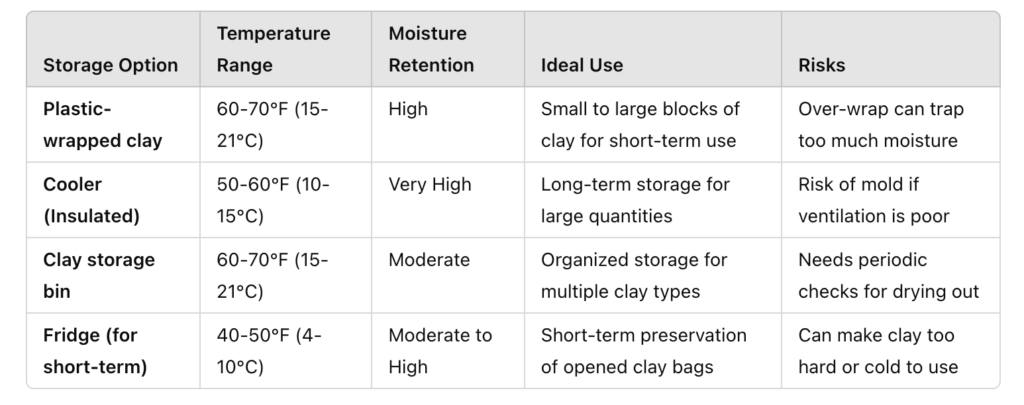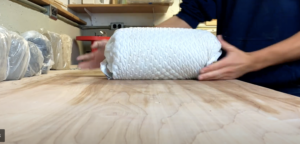Proper storage of pottery clay is essential to maintain its workability and prevent it from drying out prematurely. Pottery clay, which can be in various forms such as soft, leather-hard, or bone-dry, needs to be stored in a way that prevents excessive evaporation of moisture, which can cause the clay to become too stiff to work with or even crack. To ensure your clay stays in optimal condition, several key precautions and storage practices must be followed.
Cover When Not In Use
First, it’s crucial to keep the clay moist or covered, as exposure to air will cause the moisture content to gradually decrease, leading to drying out. The most effective method of storing clay is by wrapping it in plastic, which creates a sealed environment that traps moisture. For large blocks of clay, artists often use heavy-duty plastic wrap or trash bags. These materials keep air from penetrating and allow the clay to retain its moisture. Smaller portions of clay can be stored in plastic bags, tightly sealed to ensure that no air reaches the material. Another precaution is to use damp towels or cloths to wrap the clay before sealing it in plastic. The moisture from the towel helps maintain an appropriate humidity level, preventing the clay from drying too quickly.
Optimal Storage Temperatures
To better understand the optimal storage area, a comparison chart with different types of coolers or storage environments can be used:

When analyzing a coolers compared, the temperature is typically consistent and controlled, with insulation that helps retain moisture. However, it’s important to make sure there’s ventilation, as humidity levels can become too high, leading to mold growth. In contrast, a simple plastic-wrapped block of clay at room temperature is an easier and more accessible option, though it requires more frequent monitoring to ensure the clay doesn’t dry out. For longer storage, an insulated storage bin offers moderate protection, but it’s necessary to check periodically for any signs of dehydration.
Space & Scale Considerations
 Ultimately, where most artists store their clay depends on the scale of their operations and available space. Many opt for cool storage rooms, basements, or climate-controlled areas where the temperature and humidity can be kept stable. A dedicated space or even a small section of the studio with proper containers ensures that the clay remains fresh and ready for use. By understanding the needs of pottery clay and choosing the best storage method, artists can ensure their materials are always in optimal condition for their creative processes.
Ultimately, where most artists store their clay depends on the scale of their operations and available space. Many opt for cool storage rooms, basements, or climate-controlled areas where the temperature and humidity can be kept stable. A dedicated space or even a small section of the studio with proper containers ensures that the clay remains fresh and ready for use. By understanding the needs of pottery clay and choosing the best storage method, artists can ensure their materials are always in optimal condition for their creative processes.
